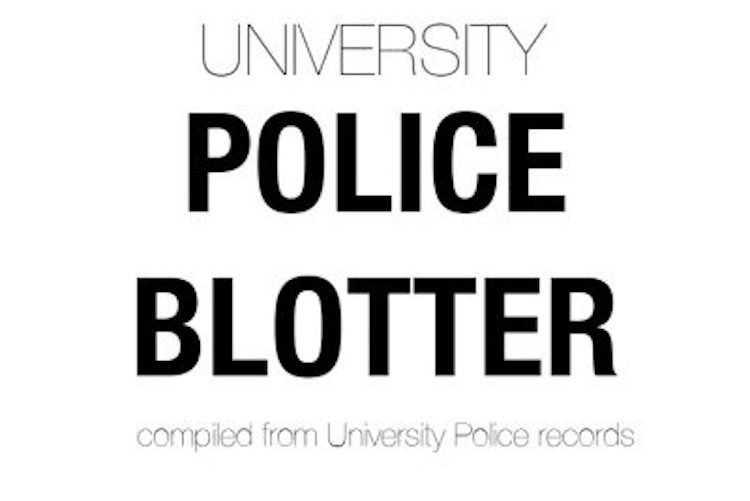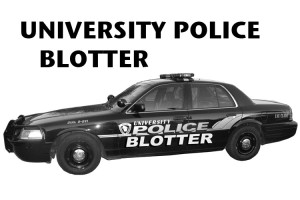Can’t catch a brake
At approximately 10:10 p.m. on Nov. 13, an officer was parked next to the UW-Eau Claire Police Department. While parked, he saw a vehicle enter the Governors Hall lot at a high speed.
The vehicle’s speed appeared to be much higher than the posted speed limit of 10 mph. As the vehicle approached the curve in the road, it braked sharply. The officer lost sight of the vehicle but watched someone run from that area and into Horan Hall shortly after.
Soon after, the officer watched a vehicle drive around the circle, pass his squad car at a high speed and accelerate as it left the lot. The officer pulled into traffic and began following the vehicle.
He followed the vehicle onto University Drive. It accelerated rapidly after stopping at a stop sign. The officer activated his emergency lights to initiate a traffic stop. The vehicle turned into the Karlgaard Towers parking lot and stopped.
The officer parked his squad car behind the vehicle and approached the driver and the passenger. The officer told the driver that he stopped him because he was speeding through the Governors Lot and had put people at risk with his driving.
The driver said his friend had been injured and he and his passenger were driving to the hospital. The officer asked how fast he had driven through the lot, to which he responded 25 or 30 mph.
The officer asked the driver what the lot’s speed limit was and the driver said it was 25 mph. The officer informed him that it was 10 mph and that he would be receiving a citation for unreasonable/imprudent speed.
The officer went to his squad car and conducted a records check on the driver and his vehicle. He prepared the driver’s citation and explained it to him, and the driver said he did not have any questions.
The officer asked the driver if he thought it was a good idea for him to continue driving, as he was obviously agitated about his friend’s condition.
He said it was not and he would ask his passenger to drive instead. As the officer cleared from the area, he saw the driver switch places with his passenger.
Citations don’t fix bullet holes
On Nov. 16, an officer was parked in the Hibbard Hall parking lot assisting an officer with an OWI investigation when he heard a nearby vehicle with a revving engine and squealing tires.
This happened several times and seemed to be getting closer to the officer’s location. Soon after, he saw the vehicle driving near him. The officer was confident this was the vehicle he had just heard in the parking lot, and as the vehicle entered his line of sight, its tired squealed again.
The officer felt that the driving behavior created a safety concern for other drivers and pedestrians, so he left the parking lot and initiated a traffic stop.
The officer made contact with the driver and asked if he knew why he had stopped him. The driver said he did not, and the officer noticed that the driver looked very nervous while talking to him.
The officer informed the driver about what he heard and asked why he was driving like that. The driver admitted to the behaviors but then told the officer that he knew whatever he said could be used against him in a court of law and refused to admit anything.
The driver continued to be cautious about what he said to the officer but agreed that his driving behavior was not appropriate.
While talking to the driver, the officer noticed that there were nearly 100 bullet holes in the side of his truck. The officer asked him about it, and the driver responded that he really likes shooting and thought it looked cool.
The officer asked the driver if he had any weapons with him, and he stated he did not. For precautionary reasons, the officer told the driver he needed to keep his hands on the wheel. The driver did need to be reminded, but did so when asked.
The officer issued a citation for unnecessary acceleration. He explained the court date and time, and the citation amount. The driver had no specific questions and was released.
Before releasing him, the officer told the driver that he needed to stop driving the way he was. The officer asked if his truck was able to operate without squealing the tires and he said it was.
The officer told him that if he continued to drive like that, he would stop him again, and the driver said he understood.
The officer cleared the scene.
Price can be reached at pricekb7791@uwec.edu.




